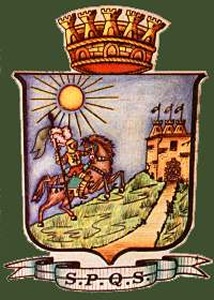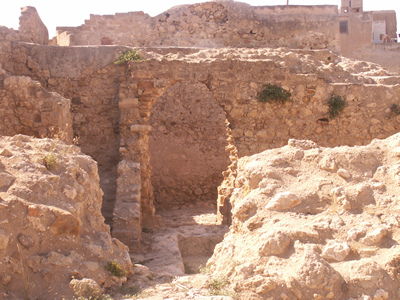Sciacca, Sicily |
|
Click Home to go to the main page, or click for an Alphabetic List of all Names. |
|
Sciacca is a picturesque seaside town built on rocky heights that overlook the Mediterranean Sea on the south-western coast of the Sicily. The town of Sciacca is a 30-minute drive east from Selinunte and its temples, and less than an hour's drive west from Agrigento. Sciacca is noted for its numerous artisan shops, which specialize in ceramic ware, its Thermal Spa complex and its fishing fleet. |
|
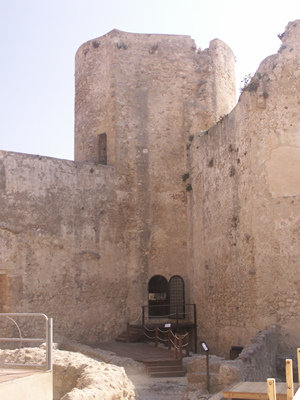 Sciacca's origin has been traced as far back as 628 BC and was respected by everyone for its spas. The spas were both social and curative and part of daily life, visited by both men and women. The mythical founder of the city is said to have been Kokalos, King of the Sicani. It is one of the most ancient thermal resorts on the Mediterranean. It was known in Siceliot times for its sweating caves, located above the city in Mount Kronio, below St. Calogero's sanctuary, where handmade pre-historic objects have been found, and for its thermal waters, which were also used in the treatment of ailments. The Romans gave it the name Thermae Siluntinae or Aquae Larodae. Ancient Greek Temples are but a short drive east or west, with the most well preserved outside of Greece, located in Agrigento about a 30-40 minute drive along the coast. Sciacca's origin has been traced as far back as 628 BC and was respected by everyone for its spas. The spas were both social and curative and part of daily life, visited by both men and women. The mythical founder of the city is said to have been Kokalos, King of the Sicani. It is one of the most ancient thermal resorts on the Mediterranean. It was known in Siceliot times for its sweating caves, located above the city in Mount Kronio, below St. Calogero's sanctuary, where handmade pre-historic objects have been found, and for its thermal waters, which were also used in the treatment of ailments. The Romans gave it the name Thermae Siluntinae or Aquae Larodae. Ancient Greek Temples are but a short drive east or west, with the most well preserved outside of Greece, located in Agrigento about a 30-40 minute drive along the coast.
Numerous peoples have invaded this city over the centuries (Romans, Byzantine, Arabs, Normans, Spaniards, Austrians, etc.). During the middle ages, Sciacca, already famous for its natural resources, was the seat of powerful noble families who rendered it an impregnable fortress. Parts of the walled city can still be seen today. In 840 the village was renamed Ash-Shaqquh (hence the current name Sciacca) as a result of the Arab conquest and began a period of economic growth. The port and its loading equipment, constructed by the Romans, were restored. Sciacca became the principal Sicilian port for the export of Sicilian grain to North Africa, and the town's fishing industry thrived as well. The up and coming middle class occupied themselves with commerce and crafts and the town experienced a rapid urban increase. Urban development continued in the following centuries during Norman rule.
Sciacca was surrounded, several times, by walls and fortified with castles (there are traces of the Luna Castle extisting today) but was frequently troubled by internal struggles between local vassals. In the historic center, around which the modern city has been extensively developed, there are some late-medieval and late-Baroque monuments, the latter including the duomo (Cathedral). Sciacca's most famous building is Palazzo Steripinto (late 15th century - early 16th). The ashlars (diamond shaped stone facings) on the facade recall the palazzo dei Diamanti in Ferrara (1492-1565) but some have likened its general stylistic system to the almost contemporary Palazzo Sanseverino in Naples, and others have linked it with Catalan (Spanish) architecture of the same time period.
There was a period of great flourishing in the 16th and 17th centuries when important factories sprang up. The people of Sciacca have for a long time been most skillful in the crafting of ceramics. Sciacca became a famous center of production, most notably for floor tiles of great artistic merit and was commissioned throughout Sicily to embellish churches and palaces. Pottery from the 7th Century BC have been found. In the 15th Century, the tiles for the famous Cathedral of Monreale, outside of Palermo, were manufactured in Sciacca.
The sanctuary or Basilica di San Calogero, located on Monte Kronio, about 7 kilometers outside of Sciacca proper and mentioned earlier, dates back to the 16th Century, and is Baroque in style. It was built in honor of a hermit (Calogero means handsome old man), who came from far off Constantinople to live and dedicate himself to prayer and meditation. He isolated himself in the caverns beneath the mountain (they can be visited today). To this day stories abound about his miracles and good works which contributed to his being made a Saint, and the patron saint of Sciacca. The feminine version of his name is in our family- Calogera Chiarella. The nickname for Calogero is Lilo, normally Charles in English, which is the name of Accursio & Caterina Sabella's eldest son.
|
|
| ~<^>~ | |
Sciacca's Coat of Arms |
|
| Thanks to G & W Ingram for the photos. | |
 |
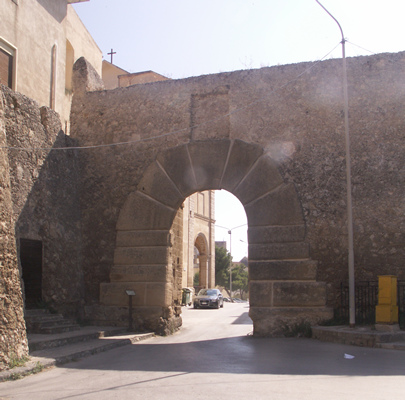 |
Bell Tower |
Arched entry through city wall to St. Michaels Church. |
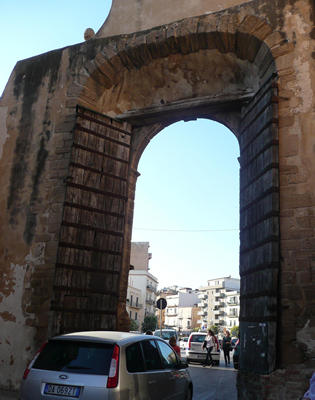 |
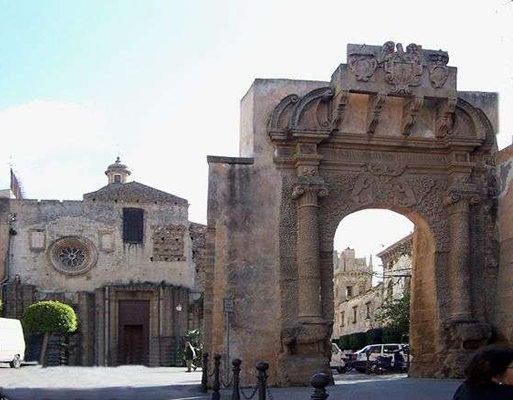 |
Sciacca has five city gates. The walls of the city can be seen preserved in several locations, and some of the gates are still in use today. |
|
| ~< Back to Top >~ | |
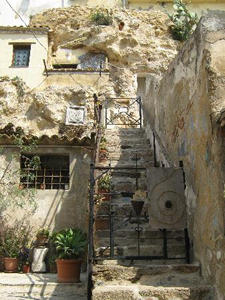 |
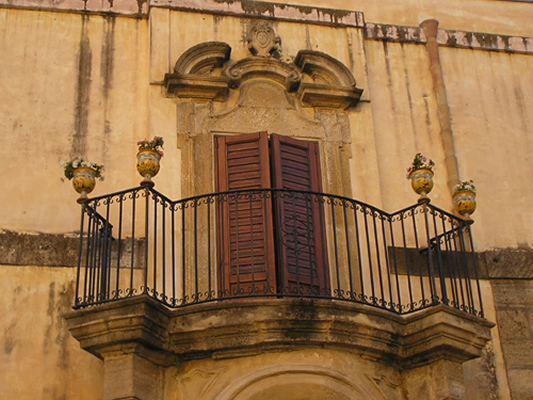 |
 |
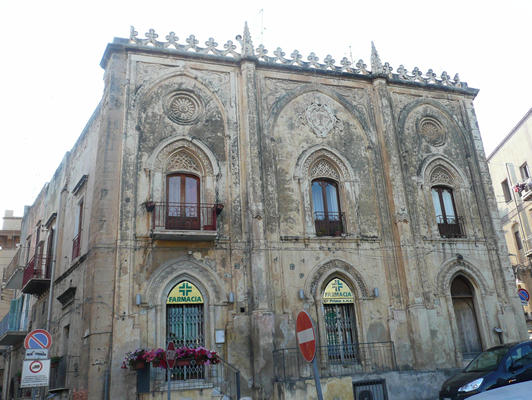 |
St. Michael the Archangel Church, AKA St. Michele |
The sign in the window says Pharmacy. |
| ~< Back to Top >~ | |
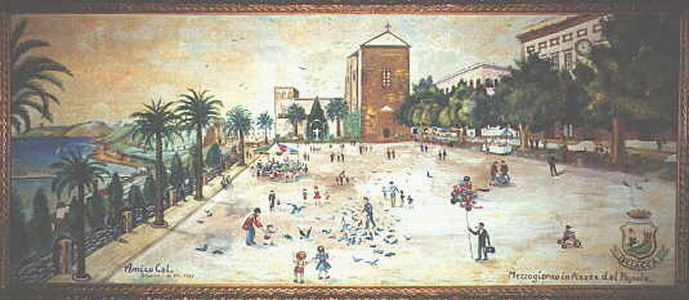 |
|
Piazza del Popolo, above, is the oldest square of Sciacca, built in the 900s as a small square in front of two ancient medieval monuments: the Church of San Domenico, and the Convent of the Jesuits, now City Hall. Later it was expanded by filling the ravine below it and repaved, creating a meeting point for all Saccense. The Piazza del Popolo kept this name until the mid-twentieth century, then it became Piazza San Domenico and subsequently Piazza Scandaliato (below). As the center of the community, it has always been the meeting point of generations that have traveled far and wide. The Politeama Theatre Mariano Rossi, a real gem of the 900s, was part of the piazza but the old unused building was demolished to make room for parking. Today the current Scandaliato Square continues to be the cultural center of Sciacca, with carnival and religious events: the famous Carnival of Sciacca and the feast of the Patron Saints of Sciacca are held here. |
|
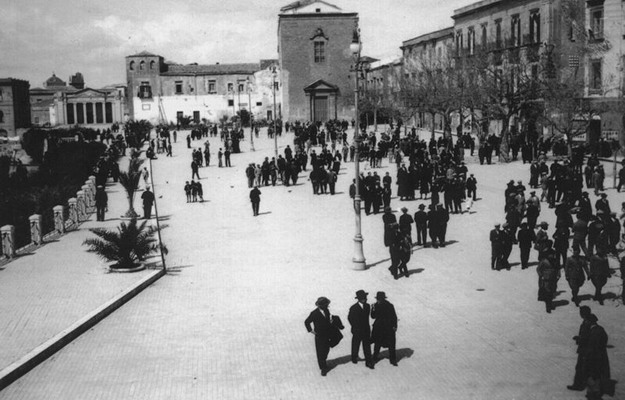 |
|
| ~< Back to Top >~ ~< Back to the Family Page >~ | |
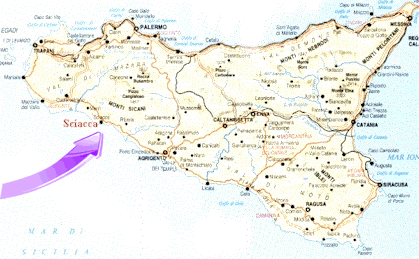
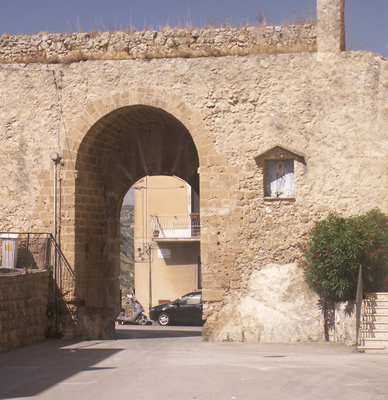 Sciacca was bequeathed by Count Roger I to his daughter, Juliet in 1101. She had Christian churches and monasteries erected in place of the mosques. From 1400 to 1529 it was the stage of a real civil war, which brought it sad fame. It was called the Case of Sciacca, in which the Norman Perollo family and the Catalan Luna family were fierce rivals for over a century. Insults, murders and suicides took place with such regularity and rapidity as to thrust it into chaos, fear and bloodshed the entire citizenry who were divided between the two factions. The end of the feud exemplified the violence. Giacomo Perollo was killed and dragged around the city tied to a horse's tail, while his rival, Sigismondo Luna, fled to Rome, where the horror of his crime never left him until he committed suicide by jumping into the Tiber River.
Sciacca was bequeathed by Count Roger I to his daughter, Juliet in 1101. She had Christian churches and monasteries erected in place of the mosques. From 1400 to 1529 it was the stage of a real civil war, which brought it sad fame. It was called the Case of Sciacca, in which the Norman Perollo family and the Catalan Luna family were fierce rivals for over a century. Insults, murders and suicides took place with such regularity and rapidity as to thrust it into chaos, fear and bloodshed the entire citizenry who were divided between the two factions. The end of the feud exemplified the violence. Giacomo Perollo was killed and dragged around the city tied to a horse's tail, while his rival, Sigismondo Luna, fled to Rome, where the horror of his crime never left him until he committed suicide by jumping into the Tiber River.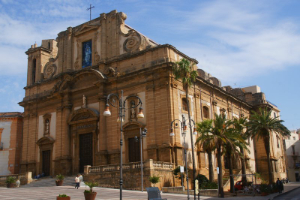
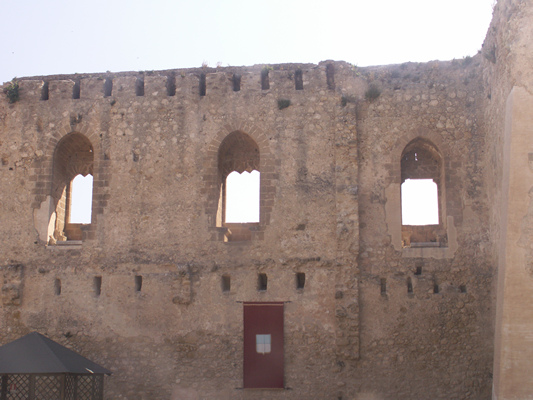 Today Sciacca is still known for its ceramic shops, and its fishing fleet, famous Carnevale, thermal baths and beautiful beaches. The ceramic workshops still follow the oldest traditions in their production maintaining the forms and colors of their predecessors. Yellow, green and blue overwhelm the shops with color and overflow onto the streets where craftsmen arrange multicolored vases, plates, cups and candlesticks. The fishing boat has been handed down in the same way that the craftsmen have handed down their trade. There are hundreds of fishing boats that moor in the port. It is also the fisherman that continue in the city's devotion to the Madonna del Soccorso.
Today Sciacca is still known for its ceramic shops, and its fishing fleet, famous Carnevale, thermal baths and beautiful beaches. The ceramic workshops still follow the oldest traditions in their production maintaining the forms and colors of their predecessors. Yellow, green and blue overwhelm the shops with color and overflow onto the streets where craftsmen arrange multicolored vases, plates, cups and candlesticks. The fishing boat has been handed down in the same way that the craftsmen have handed down their trade. There are hundreds of fishing boats that moor in the port. It is also the fisherman that continue in the city's devotion to the Madonna del Soccorso.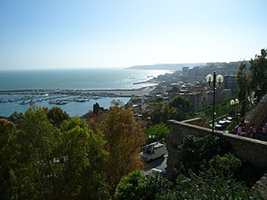 There are numerous festivals celebrated each year in Sciacca:
There are numerous festivals celebrated each year in Sciacca: